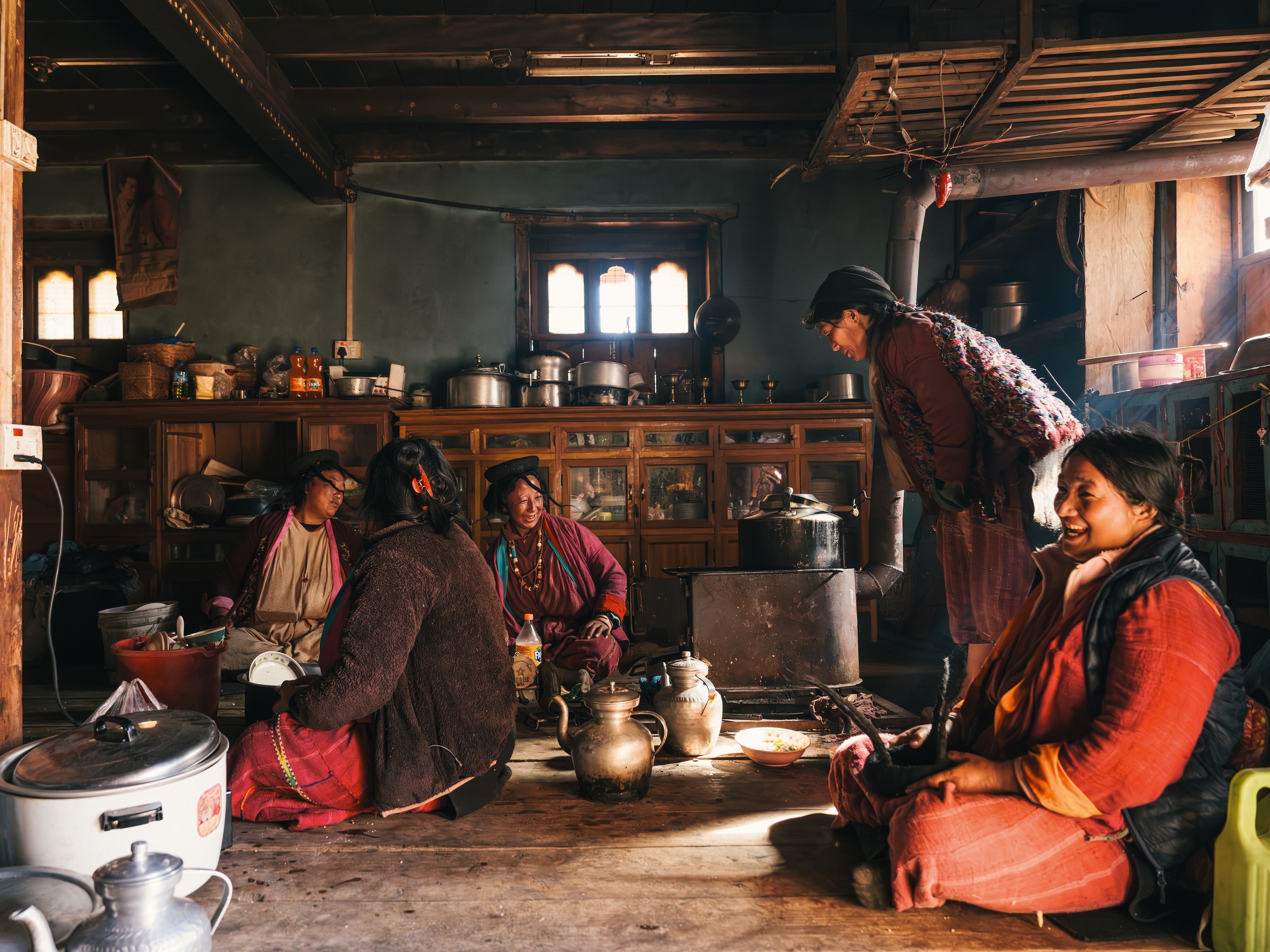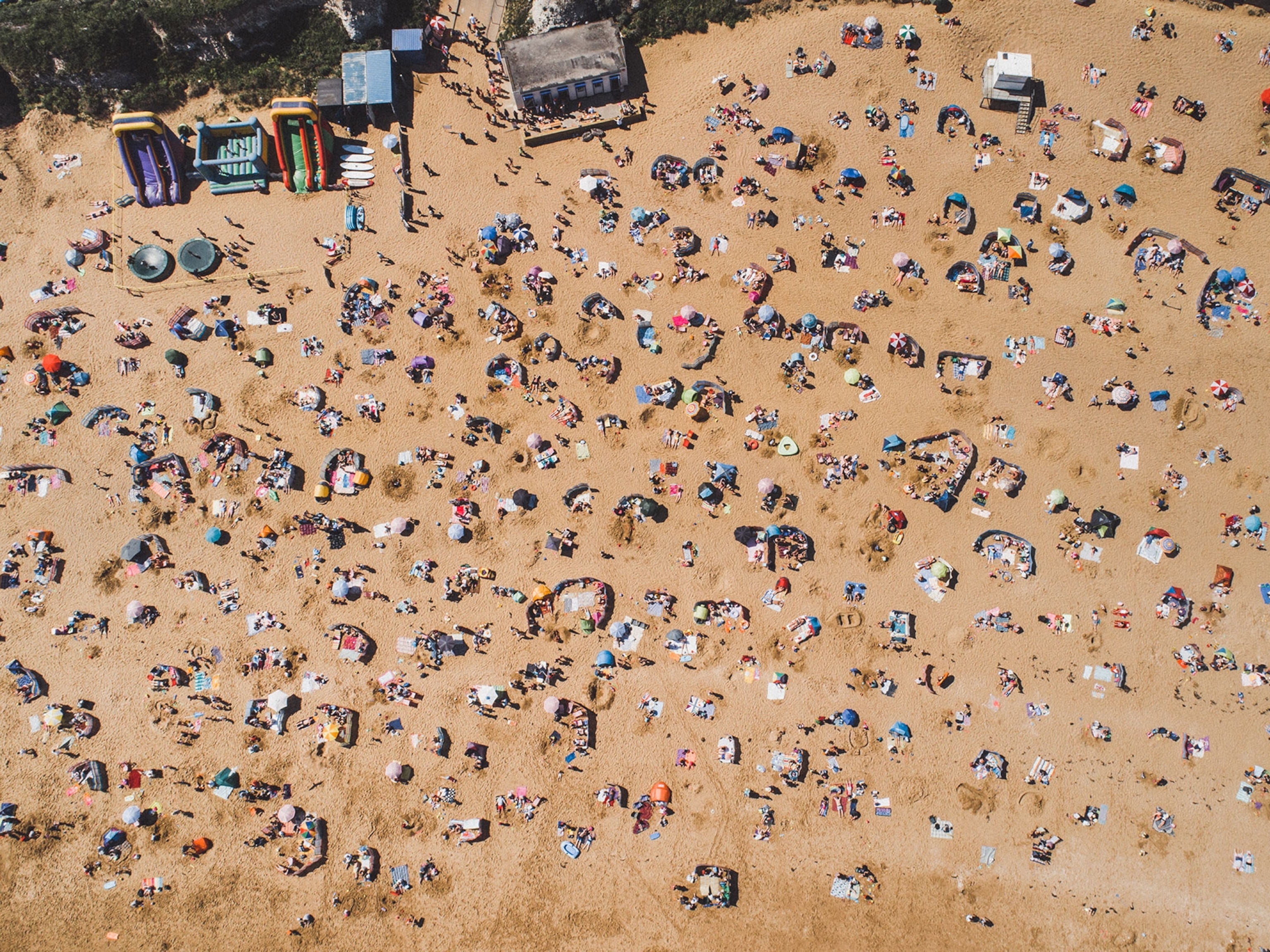
Traveler of the Year: Heather Finnecy
Worldly Women—Revealing portraits on the road
A Photographer Lifts the Veil
Every traveler carries a question. For Heather Finnecy, a Bay Area–based photographer, that question is, What is life like for women in other cultures? “As an American, I found there was a hole in the imagery and information that I received about the daily lives of women in the world,” she says. “So I decided to set out and see for myself what it was like.”
Following an itinerary that many travelers would steer clear of, Finnecy set off for the Middle East in 2013 to photograph women in Jordan, Lebanon, the Palestinian territories, Kuwait, the United Arab Emirates, and Afghanistan. Her project, From What I Can See, presents profiles in text and images of women driving cars in Dubai, taking English classes in Kabul, and surviving as Syrian refugees in Jordan’s Zaatari camp. “These are places that Americans tend to fear when hearing the name, but my goal is to show what normal life is like there,” she says.
Instead of images of repression, chaos, and fear, Finnecy’s work speaks of diversity, dreams, and struggles within the Middle East. She also discovered that the women she photographed shared many of her own aspirations. “I believe in helping different cultures find similarities that they didn’t know they had,” she says. In return, she’s encountered “beauty, grace, strength, and kindness” in some of the world’s least likely places, including the refugee camps of Iraqi Kurdistan, where she hopes to resume filming a documentary.
“I believe that every time I go to a new country and I connect with a human there, I am making the world smaller,” Finnecy says. “If my photos can show a different perspective, then I feel I am doing something worthwhile.”
—By George W. Stone
THE INTERVIEW
National Geographic Traveler: What inspired From What I Can See?
Heather Finnecy: I really believe in the importance of helping different cultures understand one another. My tool for that happens to be my camera. As I wrote on my website, I wanted to know what life was really like for women, especially young women who were coming through the time in their lives where they were deciding what they wanted to do and to be. Women of the younger generations, who would shape the future of their countries, who represented the more modern Middle East. I wanted to meet them and to create a different visual dialogue about the reality of the region and about the complete diversity that exists there.
NGT: How do you choose your destinations?
HF: I like going to places that really aren't tourist destinations at all, and going with the sole purpose of meeting the people. As a photographer, it’s my passion to try to get different cultures—even ones that are at war with each other—to understand each other a little more. To see some commonality. To realize that “they,” too, are individuals who just want to live their lives happily. That is something I think we all have in common, the world over.
NGT: What’s your greatest reward?
HF: It’s been a labor of love for me, but if my travels in and photos from the Middle East can show a different perspective to people back home who probably won't ever go there and see it for themselves, then I feel like I am doing something that is worth it.
NGT: You certainly have a few uncommon stamps in your passport.
HF: On my initial trip I went to Lebanon, Palestine, Jordan, Kuwait, and the UAE. I have been back in the Middle East since, working on my project in Afghanistan, spending a lot of time with the Syrian refugees in the Zaatari camp and Jordan at large, and visiting Iraqi Kurdistan to film a documentary about the refugee camps there.
NGT: What’s next?
HF: I’ve started a side project that I’m calling Dare Not Go. I launched it when I looked at the Department of State’s website and realized that I had already gone to many of the countries on the “Do Not Travel" list. So my project is about documenting life in these countries—places that Americans tend to fear even when hearing the name. My intention is just to photograph normal daily life there—like a juice bar and a passport photographer in Kabul, for example. So I have a lot going on!
NGT: Is it hard to keep it all going at once?
HF: I have so much content to add that I haven't been able to keep up with myself!
NGT: What’s your best travel advice?
HF: Go with the flow, embracing what arises.
>> Next: 11 People, 11 Inspiring Examples
Related Topics
You May Also Like
Go Further
Animals
- This ‘saber-toothed’ salmon wasn’t quite what we thoughtThis ‘saber-toothed’ salmon wasn’t quite what we thought
- Why this rhino-zebra friendship makes perfect senseWhy this rhino-zebra friendship makes perfect sense
- When did bioluminescence evolve? It’s older than we thought.When did bioluminescence evolve? It’s older than we thought.
- Soy, skim … spider. Are any of these technically milk?Soy, skim … spider. Are any of these technically milk?
- This pristine piece of the Amazon shows nature’s resilienceThis pristine piece of the Amazon shows nature’s resilience
Environment
- This pristine piece of the Amazon shows nature’s resilienceThis pristine piece of the Amazon shows nature’s resilience
- Listen to 30 years of climate change transformed into haunting musicListen to 30 years of climate change transformed into haunting music
- This ancient society tried to stop El Niño—with child sacrificeThis ancient society tried to stop El Niño—with child sacrifice
- U.S. plans to clean its drinking water. What does that mean?U.S. plans to clean its drinking water. What does that mean?
History & Culture
- Meet the original members of the tortured poets departmentMeet the original members of the tortured poets department
- Séances at the White House? Why these first ladies turned to the occultSéances at the White House? Why these first ladies turned to the occult
- Gambling is everywhere now. When is that a problem?Gambling is everywhere now. When is that a problem?
- Beauty is pain—at least it was in 17th-century SpainBeauty is pain—at least it was in 17th-century Spain
- The real spies who inspired ‘The Ministry of Ungentlemanly Warfare’The real spies who inspired ‘The Ministry of Ungentlemanly Warfare’
Science
- Here's how astronomers found one of the rarest phenomenons in spaceHere's how astronomers found one of the rarest phenomenons in space
- Not an extrovert or introvert? There’s a word for that.Not an extrovert or introvert? There’s a word for that.
- NASA has a plan to clean up space junk—but is going green enough?NASA has a plan to clean up space junk—but is going green enough?
- Soy, skim … spider. Are any of these technically milk?Soy, skim … spider. Are any of these technically milk?
- Can aspirin help protect against colorectal cancers?Can aspirin help protect against colorectal cancers?
Travel
- What it's like to hike the Camino del Mayab in MexicoWhat it's like to hike the Camino del Mayab in Mexico
- Is this small English town Yorkshire's culinary capital?Is this small English town Yorkshire's culinary capital?
- This chef is taking Indian cuisine in a bold new directionThis chef is taking Indian cuisine in a bold new direction
- Follow in the footsteps of Robin Hood in Sherwood ForestFollow in the footsteps of Robin Hood in Sherwood Forest




